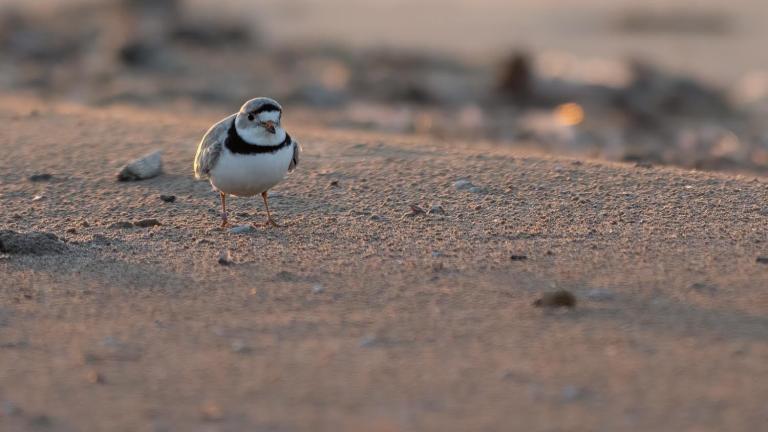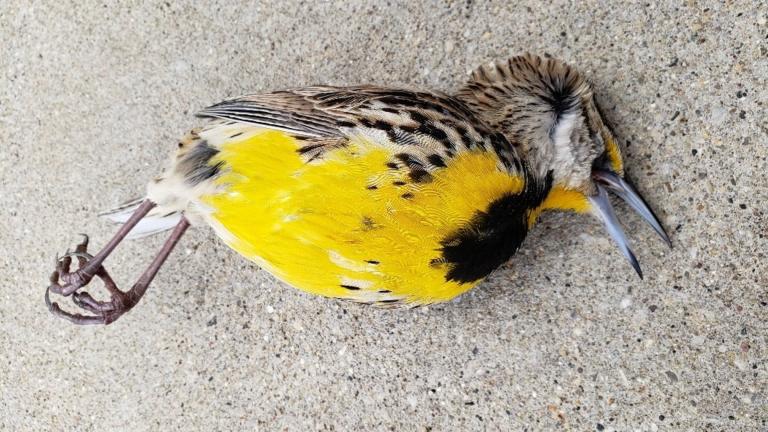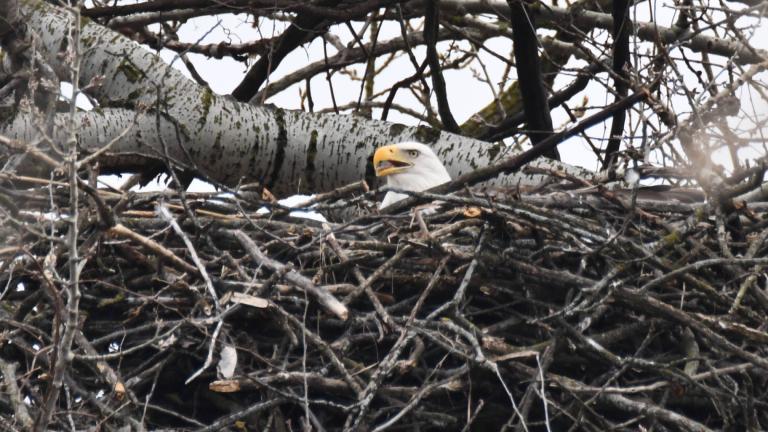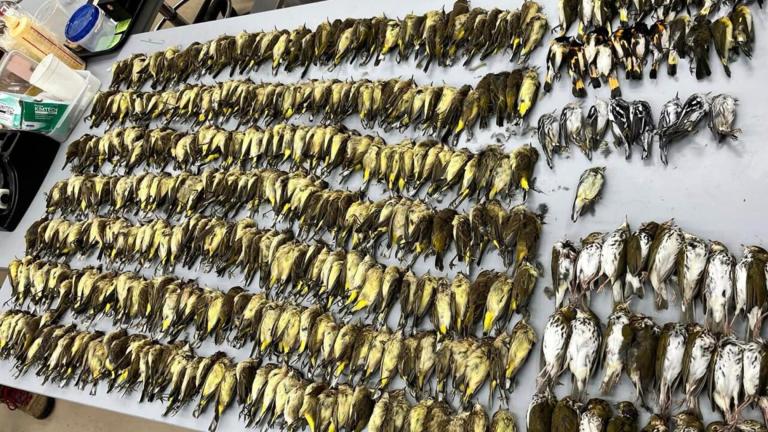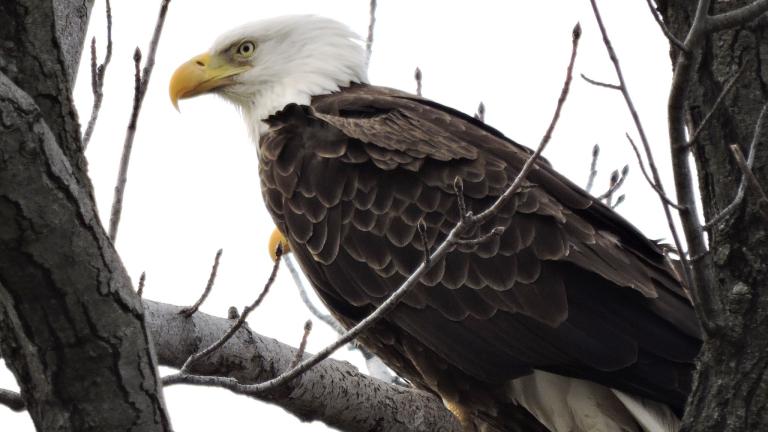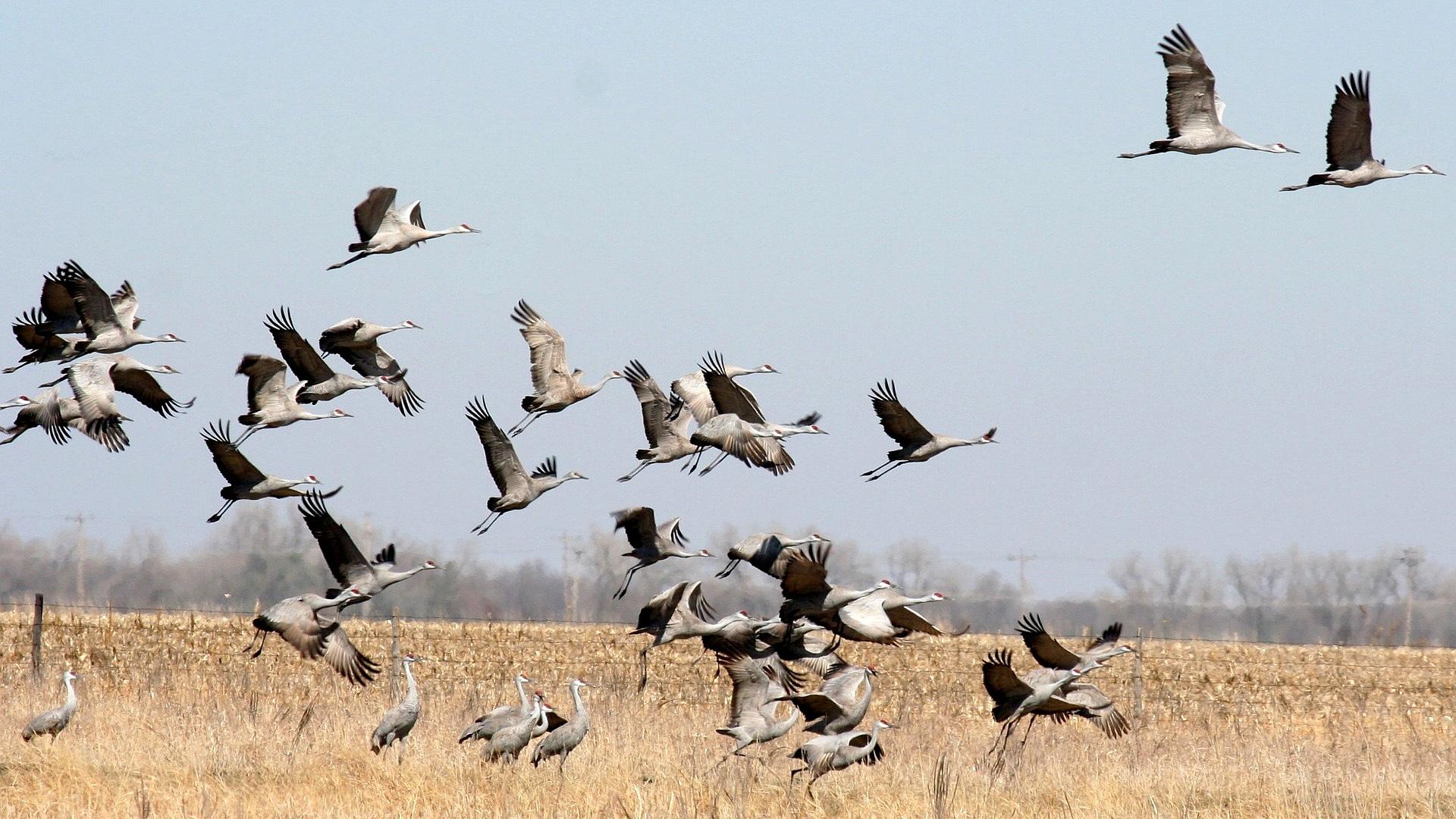 Sandhill cranes. (ladymacbeth / Pixabay)
Sandhill cranes. (ladymacbeth / Pixabay)
Tens of thousands of sandhill cranes have been winging their way over the Chicago area in recent weeks, heading from their northern breeding grounds to their winter home in Florida.
To spot the soaring migrants, it’s best to listen, then look.
“You’ll always hear them first,” said Nathaniel Miller, director of conservation for Audubon Great Lakes. “I think they sound like dinosaurs, it’s this loud kind of clattering.”
If you hear that noise, look up, Miller said.
“Sandhill cranes are pretty identifiable. They’ll be in big flocks, oftentimes in a ‘V’ like you’d see geese. But you can tell, they’re very big, and they don’t pull their necks in like a heron would,” he said. “So they look kind of like a lowercase ‘t,’ a nice real long body and then big wings off the sides. If you look up, you can sometimes see groups of 200-300.”
A key pit stop for the birds on their journey south is the Jasper-Pulaski Fish and Wildlife Area, near Knox, Indiana, about an hour and a half southeast of Chicago, where they’ll rest up and refuel. Nearly the entire eastern population of the sandhill crane depends on the marsh wetlands of Jasper-Pulaski, which has been designated as a Globally Important Bird Area by National Audubon Society.
The cranes typically begin arriving at Jasper-Pulaski in mid-October and are gone by mid-December. The most recent weekly count, taken on Tuesday, tallied 25,092 sandhill cranes at Jasper-Pulaski, up from 16,375 the previous week, but still far short of the 34,629 recorded in late November 2002.
Visitors are welcome at Jasper-Pulaski, where an observation deck has been set up for closer viewing.
Dusk is one of the best times to come see the cranes, just as they return from a long day of foraging. “It looks like a party scene,” Miller said.
But be prepared, he warned: “It is just deafening noise.”
Good morning. 16,375 Sandhill Cranes have arrived just south of Chicago at Indiana's Jasper-Pulaski Fish and Wildlife Area. Here's what it looks and sounds like. pic.twitter.com/6XBFGjvDZv
— Bob Dolgan (@bobdolgan) November 23, 2020
It wasn’t that long ago that the sight and sound of so many sandhill cranes would have been unthinkable.
One of two species of crane that makes their home in North America — whooping cranes are the other — sandhill cranes have existed in their present form for more than 2.5 million years. But by the mid-1930s, the population of the Midwest subspecies of the bird had been reduced to just two dozen nesting pairs, due to loss of habitat and overhunting.
“Canary in the coal mine” isn’t just a cliché, Miller said. When bird populations suffer, it’s generally a sign that something’s seriously off balance in an ecosystem.
In the case of the sandhill crane, the bird’s struggle for survival was indicative of a larger problem: the disappearance of wetlands, he said.
As the value of wetlands became better understood — both in terms of supporting wildlife and environmental benefits that include stormwater absorption — efforts were introduced to protect and restore this vital habitat. The sandhill crane population gradually rebounded, a success story that’s considered one of the conservation movement’s big wins, Miller said.
That victory is now jeopardy, threatened by the looming climate crisis.
The crane’s presence at Jasper-Pulaski used to peak in mid-November, now it’s becoming late November, and it’s conceivable they could start sticking around into January. Some are even beginning to overwinter at Jasper-Pulaski, Miller said.
“Birds are being pushed and tested by climate change,” he said. “The climatic range of these birds developed over millennia. It’s all about timing. They’re usually in the right places at the right time. In spring, they’re where insects are hatching. In fall, they’re where they can find nuts and berries.”
General warming trends, as well as extreme events like flooding, drought and intense heat, throw this delicate balance and timing off kilter, Miller said.
Some birds will respond by shifting their range to the north. The danger is that habitat is slower to evolve than climate, Miller said. So if sandhill cranes, for example, push further north into Canada, instead of finding wetlands they’ll run into forests.
On the other hand, attempting to adapt to changing conditions in their existing climate range brings its own challenges, including encroaching competition from other wildlife and/or predators, who may themselves be stretching territorial boundaries.
Sandhill cranes have proven themselves to be resilient. But the message from organizations like Audubon Great Lakes is that the birds remain vulnerable, and that vulnerability should set off a warning bell for humans too.
WHITHER THE WHOOPING CRANE?
Of the two species of North American cranes, the whooping crane arguably has far better name recognition among the general public, despite the sandhill being the more populous.
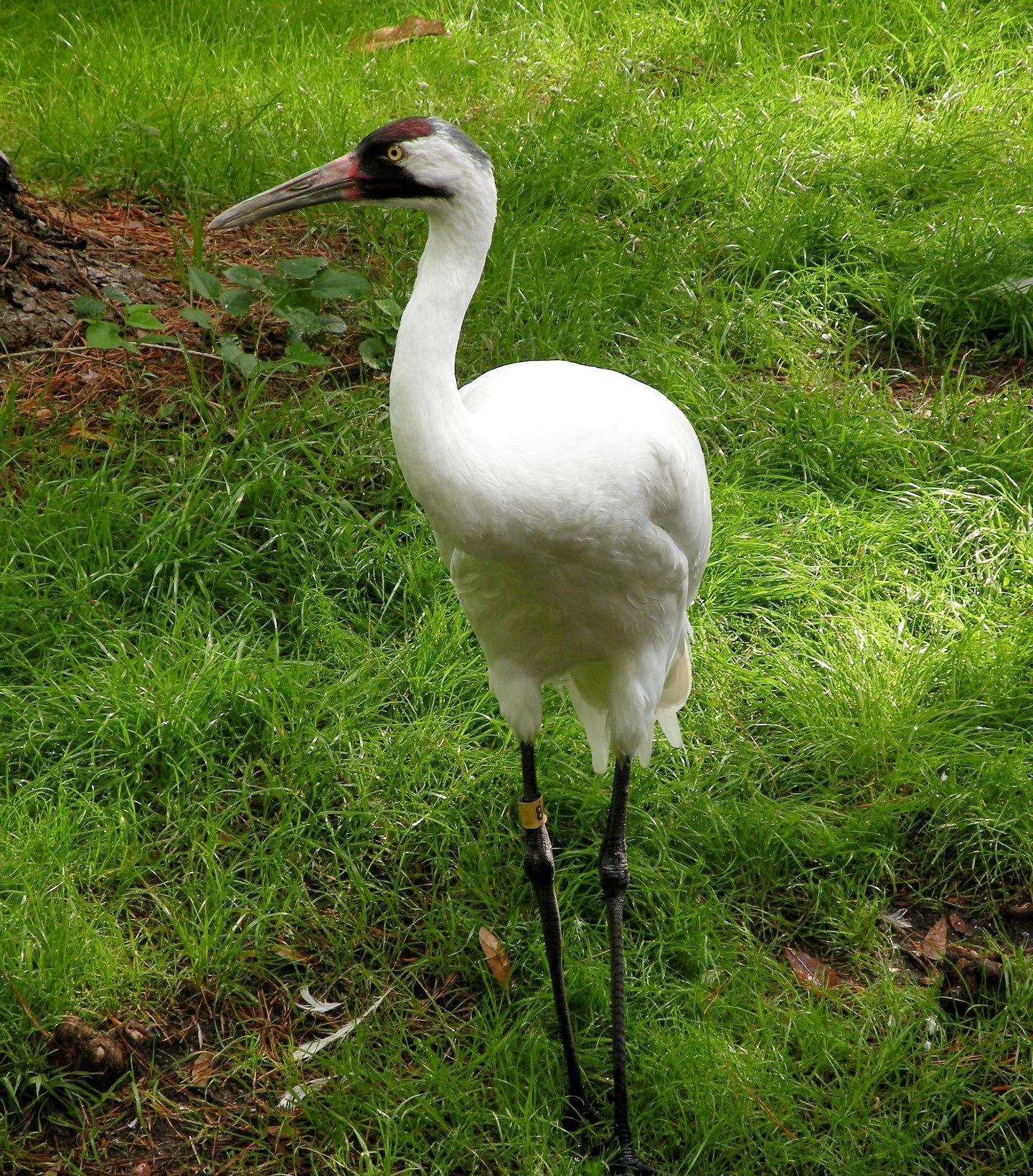 Whooping Crane. (amberlangeloni / Pixabay)
While sandhill numbers have recovered from previous lows, the whooping crane remains endangered, said Miller.
Whooping Crane. (amberlangeloni / Pixabay)
While sandhill numbers have recovered from previous lows, the whooping crane remains endangered, said Miller.
For one, the whooping crane was historically never anywhere near as common as the sandhill. It’s also less adaptive, he said. The sandhill eats just about anything it can find — leftover agricultural seeds, reptiles, small mammals — but the whooping crane is more finicky.
It’s large size and bright white color make it easier prey, Miller added.
Intensive conservation efforts — including the use of sandhill cranes as foster parents in captive breeding programs — are ongoing.
Contact Patty Wetli: @pattywetli | (773) 509-5623 | [email protected]

